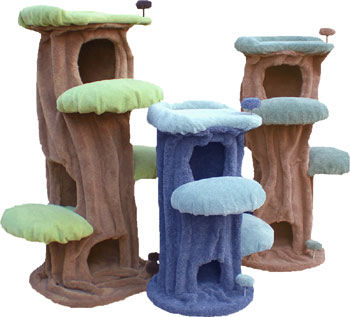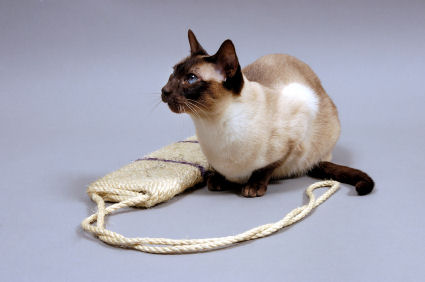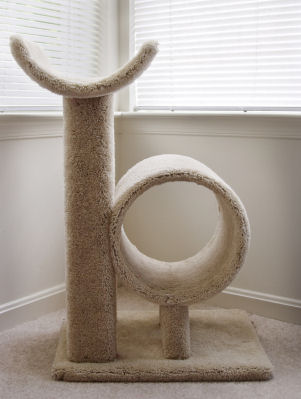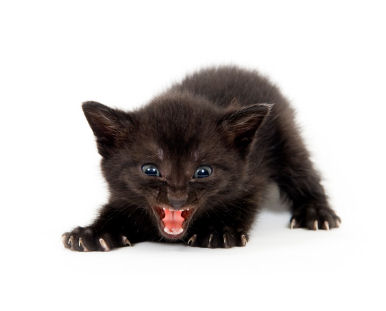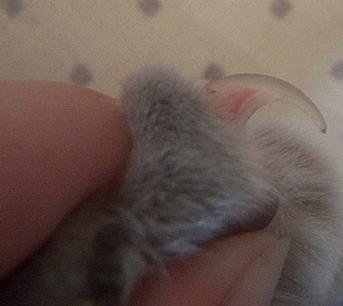Assalamualakum..
The claw is a scythe shaped appendage that is attached to the end bone of the toe. The front feet have five toes & five claws per foot & the back feet have four toes & four claws per foot. Some cats (known as polydactyls) have more than the normal number of toes & claws.
Cats are able to extend & retract their claws using specialised muscles, tendons & ligaments. Cat claws have several functions including; climbing, balance, digging, self defence & holding onto prey. The claw is made up of keratin, a hard protein that makes up the sheath & in the centre of the claw is the quick which contains blood & nerves.
Diseases & disorders that affect the claws:
- Pemphigus an autoimmune disease may affect the claws
- Systemic lupus erythematosus may affect the claws
- Bacterial infection
- Onychomycosis (fungal infection of the claw & clawbed)
- Trauma (tearing etc)
Nail (claw) biting in cats:
Some cats will bite & chew their claws while they are grooming. This is to remove the outer sheath from the claw.
Nail biting can become a compulsive behaviour in cats, just as it does in humans, but generally it is just a normal part of their grooming routine. It is always a good idea to run such behaviours past your veterinarian.
Declawing:
A procedure carried out in the US & Canada, declawing is performed for non medical reasons to prevent the cat scratching furniture or family members (both pet & human).
It is often commonly assumed that declawing is the removal of your cat's claws, however it is a little more involved than that. Declawing involves the amputation of not only the claw, but this extends up to the first knuckle. This will lead to some pain & discomfort after surgery. Other possible problems associated with declawing include;
- Bleeding
- Infection
- Bone protrusion into the pad of the paw *
- Lameness
- Behavioural problems such as biting & litter box problems
Alternatives to declawing:
There are several alternatives to declawing but the main goal is to prevent your cat clawing & damaging furniture. This may involve;
- Providing your cat with a cat tree/scratching post & working with the cat to encourage it to use that instead of your furniture. If space is a problem, you can buy small scratching posts that you hang over door handles that take up no room at all. For more information on training your cat to use a scratching post, read here.
- Using Soft Claws.
- Trimming your cat's claws regularly.
How to stop scratching:
You can't stop scratching, it is a perfectly normal behaviour. What you can do is train your cat to scratch on specifically designated objects so they will avoid ruining your furniture.
- For some owners declawing (which is prohibited in most countries) is their chosen method to prevent scratching. This is a rather painful operation which involves amputation of the cat's claw up to the first joint. The majority of people strongly disagree with declawing of cats for a multitude of reasons. It is painful & unnecessary, it can also lead to other behavioural problems such as biting & inappropriate urination. Also, cats derive great pleasure from scratching & declawing deprives them of this pleasure. There are many alternative methods which are far kinder than declawing, which is really only performed for the owner's convenience anyway.
- The plan is to make the current target unpleasant while providing your cat with a more attractive alternative such as a scratching post or cheaper scratching boards which can be hung from a door handle. There's a huge variety on the market which will suit all tastes & budgets. Most scratching posts are covered either in carpet or sisal. If possible, temporarily cover the object your cat is scratching with some thick plastic or double sided tape, which will act as a deterrent.
- Another you may want to consider are water sprays (use when your cat starts scratching the furniture), this may work but it may just stop your cat scratching when you are around.
- You can also try placing orange peel around the location. Many cats find the citrus smell extremely unpleasant.
- Now you need to encourage your cat to use the scratching post provided. You can purchase catnip spray from many pet shops & spray this on the post to attract the cat, or rub some dried catnip on the post. Cats enjoy a scratch after a nap, so try placing the scratching post close to your cat's favoured sleeping location.
- If you see your cat making a beeline for a favourite piece of furniture to scratch on, gently pick up the cat & move it over to the scratching post. If the cat uses it heap plenty of praise on your cat. Cats respond far better to positive behaviour than negative behaviour from their owners.
- Cutting your cat's claws regularly will minimise damage caused to your furniture. For help on trimming your cat's claws read here.
- Never physically punish a cat when you catch it scratching inappropriately. Physical punishment serves no purpose & more often than not has a negative effect on how your cat perceives you. A firm "no" & a spray with the water spray are more effective than smacking your cat.
With time & patience you will be able to re-train your cat to use a more appropriate object than your furniture. Good luck!!!
Claw care:
Cat claws continually grow. They are usually worn down during outdoor activity such as climbing & scratching. Indoor cats may keep their claws short by using a cat tree/scratching post. However, older cats, or cats without a scratching post can develop overgrown claws. It is important to keep your cat's claws trimmed to avoid overgrown claws which can result in injury, or in the case of my old & arthritic cat, the claws growing into the foot pad.
Regularly checking your cat's foot & claws should begin from kittenhood, so that your cat becomes used to having this area handled.
Credit to http://www.cat-world.com.au/cat-claws
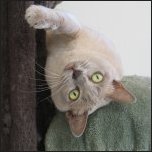 Scratching (also known as stropping) is a normal behaviour in cats. Unfortunately some cats can cause countless headaches for their owners by scratching household furnishings, which leads to damage & great expense. Scratching of furniture is a leading cause of cats being surrendered to shelters.
Scratching (also known as stropping) is a normal behaviour in cats. Unfortunately some cats can cause countless headaches for their owners by scratching household furnishings, which leads to damage & great expense. Scratching of furniture is a leading cause of cats being surrendered to shelters.
 Will Love Them Till My Last Breath ...
Will Love Them Till My Last Breath ...






 Cat trees (also known as cat condos) are structures, usually carpeted, that are used for your cat to sharpen it's claws, play & sleep on. They come in a wide variety of shapes & sizes from a very basic post to giant ones that have multiple posts, perches, platforms, cubby holes, tunnels & toys.
Cat trees (also known as cat condos) are structures, usually carpeted, that are used for your cat to sharpen it's claws, play & sleep on. They come in a wide variety of shapes & sizes from a very basic post to giant ones that have multiple posts, perches, platforms, cubby holes, tunnels & toys. 